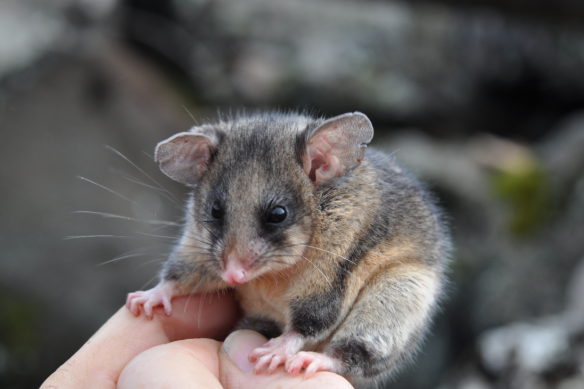
In NSW, there were only 54 spotted in 2019, and 11 by 2021. In the ACT there 34 sightings in 2019, and five in 2021. In Victoria, the numbers were higher – going from 70 to 102 in the same time period.
In mid-September Moth Tracker will be launch for its fourth year, and scientists are urging people to log their sightings of the small, brown moths, which have grey-brown wings with dark mottles and eye spots.
“Bogong moths really show that what lives in our own backyards can affect ecosystems and animals halfway across the country,” said Dr Parrott.
“Moths from southern Queensland can affect the survival of baby mountain pygmy possums in their mother’s pouch in southern NSW.”
For many thousands years, First Nations people have travelled to the alpine region to feast on the moths, which were a prized source of seasonal fat and protein and provided an opportunity for ceremony and trade.
Recently, cooked moth remains were found on 2000-year-old grinding stones in a cave in the alps, in Gunaikurnai country, believed to be the oldest archaeological evidence anywhere in the world of preparing insects using stone tools.

In 1988, Bogong moths took over the walls and blocked windows of the “new” Parliament House in Canberra. Credit:David James Bartho/Fairfax Media
The massive annual migration brought a large influx of nutrients to the alpine ecosystem, nourishing the soil.
The moths are food for many animals and insects, including the critically-endangered mountain pygmy-possum.
Using the stars and the earth’s magnetic field, the moths navigate on their extraordinary journey not once, but twice.
It’s a long flight for a tiny animal measuring just two to three centimetres long, and weighing a third of a gram.

Bogong moths are an important food source for the critically-endangered mountain pygmy possum.Credit:DPIE
When they arrive they “aestivate”, remaining dormant during hot weather in dark caves during the summer, before flying back to their breeding grounds in the autumn.
Last December, the Bogong moth was internationally classified as endangered.
Loading
This has coincided with the decline of the mountain pygmy-possum, which rely on this moth as a critical food source.
This is the first time that Moth Tracker has been a multi-state collaboration between Zoos Victoria, the Taronga Conservation Society Australia and the National Zoo & Aquarium in Canberra.
Get to the heart of what’s happening with climate change and the environment. Our fortnightly Environment newsletter brings you the news, the issues and the solutions. Sign up here.









 Add Category
Add Category